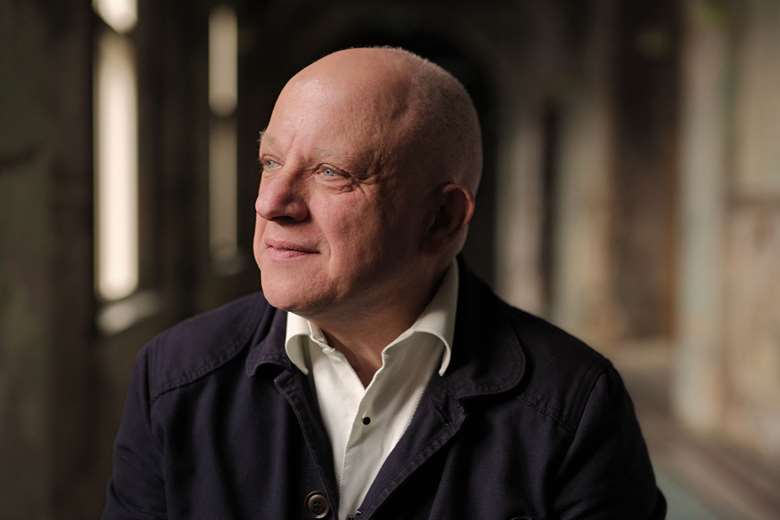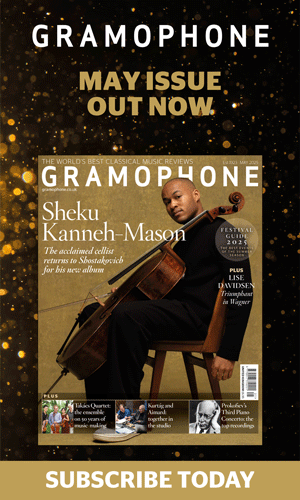The Introduction and Allegro, and the brilliance of Elgar's writing for strings
Peter Manning
Monday, February 3, 2025
With his Introduction and Allegro for Strings, Elgar extended the expressive language of string instruments

Elgar's Introduction and Allegro, scored for solo string quartet and string orchestra, is one of the central pinnacles of the orchestral repertoire.
In 1904, a crisis arose when Sir Henry Wood, conductor of the renowned Queen's Hall Orchestra in London, refused to work with replacement deputy players. This led to the formation of a new orchestra, which appeared later that year as the newly named London Symphony Orchestra (LSO). Many members of the LSO had previously played in the Queen's Hall Orchestra, and Elgar, already familiar with them, developed a close friendship with William (Billy) Reed, the LSO's sub-principal. The work premiered in the LSO's first all-Elgar concert in spring 1905 at Queen's Hall.
Elgar rehearsed the solo string quartet with Arthur Payne (leader of the LSO), WH Eayres, Alfred Hobday, and Bertie Patterson at Frank Schuster's house in Maidenhead on March 4. Schuster, a great friend and patron of Elgar, hosted this rehearsal before the full orchestral premiere at Queen's Hall, Langham Place, London, on March 8, 1905.
The Build-Up
In preceding years, Elgar made numerous visits to Bayreuth to listen to Wagner, corresponded with and met Mahler, and developed a lifelong friendship with Richard Strauss. His extensive European travels during this period also inspired the concert overture In the South (1904), which preceded Introduction and Allegro.
The establishment of the LSO, with its superb musicians, gave Elgar the confidence to showcase the full expressive potential of a virtuoso string orchestra. He was influenced by earlier models of string concertante writing, particularly those of Bach and Purcell, whom he greatly admired. His choice to incorporate a solo string quartet alongside the larger orchestral string section reflects this inspiration.
Polyphony is central to the work. As a skilled violinist, Elgar later wrote his Violin Concerto for Fritz Kreisler and even created left-hand finger exercises for Jascha Heifetz. His deep knowledge of string instruments enabled him to expand the emotional, textural, and tonal palette of the string orchestra, achieving a fresh, innovative sound for early 20th-century audiences.
Notable for its charged musical energy, Introduction and Allegro mirrors In the South in its florid, dramatic string writing, particularly for viola, cello, and double bass. The viola gained particular prominence in 1904–05 during In the South, where its extensive solo passage anticipates the virtuosic writing in Introduction and Allegro.
Elgar aimed to extend the expressive language of string instruments, ensuring that cellos and double basses played an equally significant role in his textural constructions. His intricate counterpoint and extended melodic writing, coupled with the interplay of light and shade through innovative instrument pairings, reflect his deep understanding of both Beethoven's string quartets and Mozart's Sinfonia concertante.
Structural and Artistic Achievements
Elgar's mastery of balance is evident in the dynamic contrasts within the piece. He moves seamlessly from passages of immense intensity to the most delicate nuances, shaping the music from full-throated fff to the most translucent ppp. His wide-ranging colour palette in this work prefigures the rhythmic and structural developments that emerge fully in his First Symphony (1907).
Much of his musical imagery derives from vernacular elements, carefully articulated with precise markings – perhaps influenced by his early experience composing for amateur musicians. His ability to create clear instructions for performers contributed to the expressive clarity of his works.
Elgar's belief that 'music is in the air, music is all around us, the world is full of it, and you simply take as much as you require' is particularly evident in Introduction and Allegro. The piece masterfully intertwines Purcellian counterpoint with the 'bear of a fugue,' as Elgar described it, and showcases melodic invention rooted in timeless and ancient musical traditions.
Personal Reflections
My introduction to this masterwork came during my earliest violin lessons with Laurence Turner (leader of Barbirolli's Hallé Orchestra), who played me his 78 shellac recordings of the piece with Barbirolli (1947, HMV C3670). This was one of my first major, life-changing musical experiences.
Interestingly, this recording was overseen by Fred Gaisberg, the legendary artistic director of HMV, who was a major supporter of Elgar. Together, they played an essential role in English music-making at the dawn of the recording industry. Elgar and Gaisberg were at the forefront of modernising music for a broader audience in the early 20th century.
Decades later, I had the privilege of recording Introduction and Allegro with Vernon Handley and the LPO for EMI. Since then, Elgar's string writing has remained a profound influence on me, deepening my appreciation for Britain's orchestral tradition and its enduring legacy.
While the world of Elgar is now behind us, the sheer beauty, complexity, and emotional depth of his compositions remain a testament to his genius. The inscription on the opening page of his Second Symphony, Op 63, quoting Shelley: 'Rarely, rarely cometh thou, Spirit of Delight', encapsulates the sentiment driving much of his music.
Recommended Recordings
- LPO, Sir Adrian Boult (1961)
- Boston Symphony Orchestra, Charles Munch (1957)
- Berlin Philharmonic, Semyon Bychkov (2018)
- Sinfonia of London, Sir John Barbirolli (1963)
- Hallé Orchestra, Sir John Barbirolli (1947)
- LPO, Vernon Handley (1983)
Peter Manning is Founding Artistic Director of Chromatica, a new orchestra that supports musicians at the beginning of their professional careers. Peter conducts Elgar's Introduction and Allegro for Strings at Wilton's Music Hall on February 11, 2025. Book now at chromaticaorchestra.com







